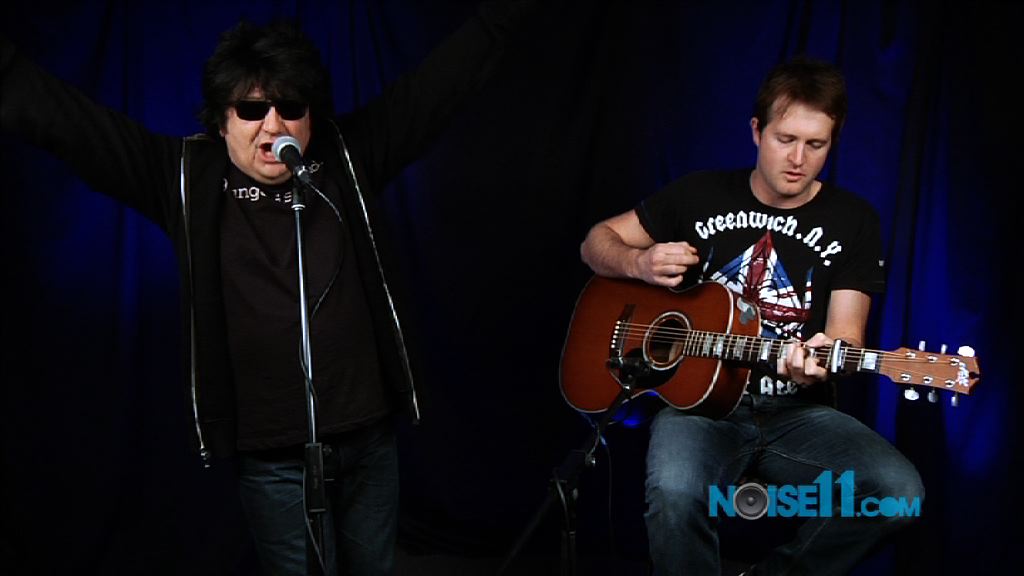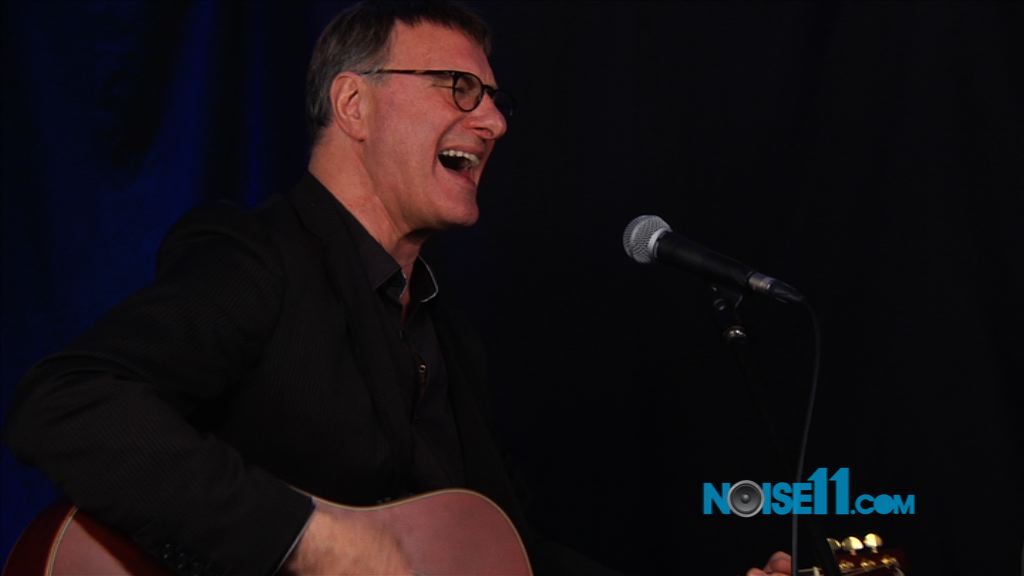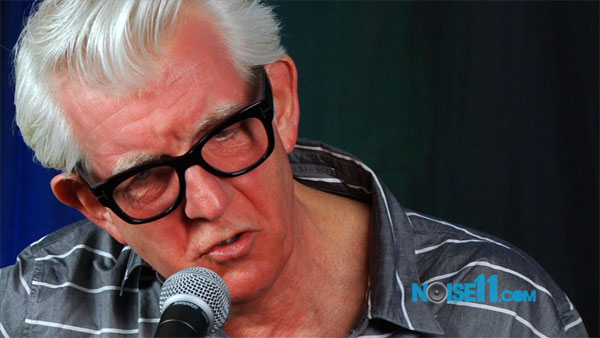Songs from the Canyon has turned into somewhat of an annual event.
The Australian production with Husky Gawenda, Dan Kelly, Charm Of Finches, Hannah Cameron, Stephen Grady & Dan Challis features the songs of Laurel Canyon. Laurel Canyon connects Sunset Boulevard and Ventura Boulevard through the Hollywood Hills. In the 60s and 70s, it became the community of artists who had migrated to California. Niel Young, Joni Mitchell, Carole King, The Byrds, The Beach Boys, Mamas and the Papas, Graham, Nash, Stephen Stills and David Crosby shared the surrounds.
Husky Gawenda reflects on his involvement, saying, “Laurel Canyon was a wellspring of near-perfect songs and golden harmonies that still resonate today. Bringing this to life with Melbourne’s best folk artists is like the fulfilment of a dream.”
Dan Kelly added, “My role in Songs From The Canyon is to bring a bit of acid confusion, murk and dirt to proceedings. Plus let rip on a whole bunch of glorious harmonies with incredible singers in a full communal scenario. A dream job!”
SONGS FROM THE CANYON
Thursday, 24 April 2025
Geelong Arts Centre, Geelong VIC
Saturday, 26 April 2025
Palais Theatre, Melbourne VIC
Sunday, 27 April 2025
Ulumbarra Theatre, Bendigo VIC
Thursday, 8 May 2025
Anita’s Theatre, Thirroul NSW
Friday, 9 May 2025
State Theatre, Sydney NSW
Saturday, 10 May 2025
Civic Theatre, Newcastle NSW
Thursday, 29 May 2025
Twin Towns Theatre, Tweed Heads NSW
Friday, 30 May 2025
QPAC, Brisbane QLD
Saturday, 31 May 2025
Events Centre, Caloundra QLD
A Historical and Cultural Overview
Nestled in the Hollywood Hills, Laurel Canyon is a picturesque neighborhood that played a pivotal role in the development of American popular music during the 1960s and 70s. This unique enclave became home to a vibrant community of musicians, whose innovative and collaborative spirit gave birth to a distinctive sound that continues to influence artists today.
Laurel Canyon’s transformation into a musical mecca began in the early 1960s, when a wave of talented musicians migrated to California, drawn by its promise of artistic freedom and a burgeoning music industry centered in Los Angeles. The canyon’s idyllic setting, with its winding roads and lush vegetation, provided an inspiring backdrop for creativity and a sense of community among artists.
The music scene in Laurel Canyon was catalyzed by the arrival of pioneering artists such as The Byrds, who were instrumental in blending folk music with rock, creating the foundation for the folk-rock genre. Their success opened the door for other musicians who sought to explore new sounds and collaborative efforts. Notable early residents included Frank Zappa, Jim Morrison of The Doors, and members of The Mamas and the Papas.
Folk music played a significant role in shaping the Laurel Canyon sound. Artists like Joni Mitchell and Crosby, Stills, Nash & Young (CSNY) brought their folk roots to the canyon, infusing their music with introspective lyrics and intricate harmonies. Mitchell’s poetic songwriting and CSNY’s harmonies became hallmarks of the Laurel Canyon aesthetic, blending confessional storytelling with a laid-back, acoustic sound.
The late 1960s and early 1970s marked the peak of Laurel Canyon’s influence on popular music. During this period, the canyon was a hotbed of creativity, with artists constantly collaborating and inspiring one another. It was not uncommon for musicians to drop by each other’s homes unannounced, leading to impromptu jam sessions and the creation of timeless music.
Several iconic albums and songs emerged from this era, capturing the essence of the Laurel Canyon sound. The Beach Boys’ “Pet Sounds,” released in 1966, showcased Brian Wilson’s avant-garde production techniques and complex arrangements, setting a new standard for pop music. The Mamas and the Papas’ “California Dreamin'” became an anthem of the era, encapsulating the longing and optimism of the California dream.
One of the defining features of the Laurel Canyon music scene was its collaborative spirit. Artists freely shared ideas, instruments, and even band members. This sense of community led to the formation of supergroups such as Crosby, Stills, Nash & Young, whose harmonies and socially conscious lyrics resonated deeply with the counterculture movement.
Beyond its musical contributions, Laurel Canyon played a significant role in shaping the cultural landscape of the 1960s and 70s. The canyon became a symbol of the counterculture movement, embodying the ideals of peace, love, and artistic freedom.
The music of Laurel Canyon often reflected the social and political upheaval of the times. Songs addressed themes such as war, civil rights, and environmentalism, resonating with a generation seeking change. Joni Mitchell’s “Big Yellow Taxi,” for example, highlighted environmental concerns with its poignant refrain, “They paved paradise and put up a parking lot.”
The lifestyle of Laurel Canyon residents was marked by a sense of bohemian freedom. Musicians lived in rustic homes, often with open-door policies that encouraged spontaneous creativity. The canyon’s relaxed atmosphere and natural beauty provided a refuge from the pressures of fame and the commercial music industry.
By the mid-1970s, the golden era of Laurel Canyon had begun to wane. Several factors contributed to the decline, including the commercialization of the music industry, the rise of new musical trends such as punk and disco, and personal conflicts among artists. Despite this, the legacy of Laurel Canyon’s music endures.The influence of the Laurel Canyon sound can still be heard in contemporary music. Modern artists such as Fleet Foxes, Haim, and Father John Misty have drawn inspiration from the canyon’s emphasis on harmonies, introspective lyrics, and a sense of community. The resurgence of interest in vinyl records and acoustic music reflects a continued appreciation for the authenticity and craftsmanship of the Laurel Canyon era.
Laurel Canyon remains a symbol of a transformative period in American music and culture. The collaborative spirit and artistic freedom that defined the canyon’s music scene continue to inspire musicians and fans alike. Documentaries, books, and films about Laurel Canyon, such as “Echo in the Canyon” and “Laurel Canyon: A Place in Time,” have helped to preserve and celebrate its rich history.
The music of Laurel Canyon represents a unique convergence of talent, creativity, and cultural significance. The songs and albums that emerged from this idyllic setting continue to resonate with listeners, offering a glimpse into a time when music was not just a profession but a way of life. As we look back on the legacy of Laurel Canyon, we are reminded of the enduring power of music to inspire, unite, and transform.
Stay updated with your free Noise11.com daily music news email alert. Subscribe to Noise11 Music News here
Be the first to see NOISE11.com’s newest interviews and special features on YOUTUBE and updated regularly. See things first SUBSCRIBE here: Noise11 on YouTube SUBSCRIBE













